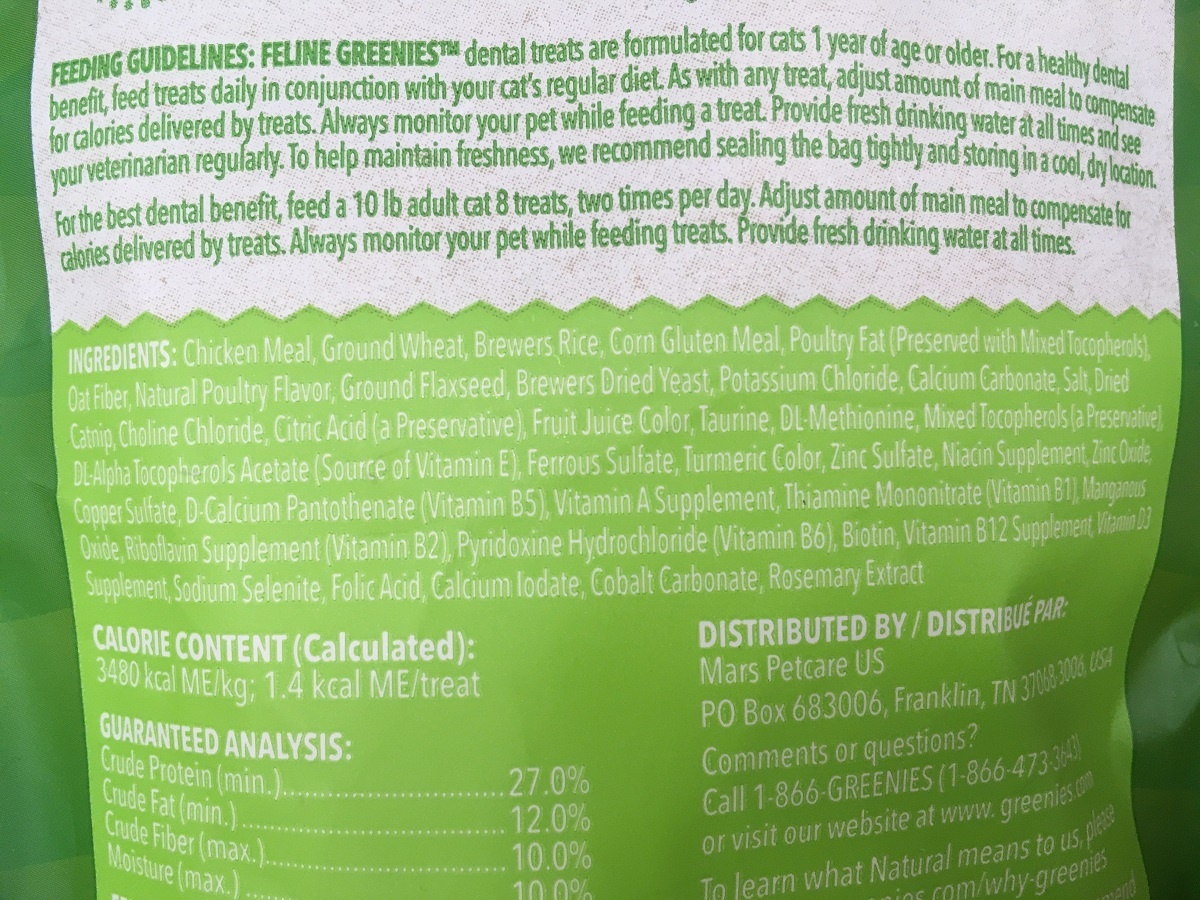The worst ingredients in cat food include mystery meat by-products and meals, rice, soy, corn, and other carbohydrates. And chemical preservatives and palatants.
These poor-quality ingredients can include low-quality rendered ingredients and floor sweepings from the human food industry.
Poor-quality ingredients can lead to diabetes, hypertension, weight gain, liver or kidney disease, and overall ill health.
So how do we know which ingredients to avoid?
I’ll teach you all about that!
PS – If you’re ready to ditch high carb kibble for a species-appropriate raw diet, my Switch to Raw Blueprint digital magazine is for you!
My Switch to Raw Blueprint digital magazine includes my proven food transition plan, healthy treats & topper recommendations to enhance meals, best cat food brands I feed and recommend as a pet nutritionist, and so much more so you can switch your cat to a healthy premade raw diet easily and confidently.
What are bad ingredients in cat food?
Bad ingredients in cat food are unnecessary and low-quality ingredients.
This includes carbs, sugar, nondescriptive meats, chemical preservatives, palatants, and colors.
These are bad ingredients because they are inappropriate for cats.
Nondescriptive meats can include 4D meats (dead, diseased, dying, disabled).
Many chemical preservatives and colors can cause cancer.
Here are common ingredients in cat food to avoid:
- Corn
- Rice
- Soy
- Brewers yeast and rice
- Wheat
- Sugar
- Meat by-products and meat and bone meal
- Animal digest
- Poultry fat, by-products, and meal
- Fish oil
- Salt
- Cellulose
- Colors (yellow 5, yellow 6, blue 2, red 3, red 40)
- BHA, BHT, ethoxyquin (chemical preservatives)
- Phosphates, pyrophosphates, and polyphosphates (inorganic phosphorus)
Why are these ingredients in cat food bad?
Grain, corn, soy, and rice ingredients are cheap fillers in cat food.
Cat food manufacturers use these ingredients to bump up the protein content.

These cheap fillers can:
- Include deadly mold
- Encourage diabetes
- Cause bowel distress and digestive upset
- Lead to diabetes, arthritis, and allergies
- Be toxic to the liver and kidneys
- Include floor-sweepings from the human food industry
Sugar in all forms (dextrose, sucrose, corn syrup, beet pulp, etc.) can lead to:
- Hyperactivity
- Weight gain
- Diabetes
- Ill-health
- Addiction to food
Nondescriptive meat ingredients can include 4D meats:
- Meat by-products
- Meat and bone meal
- Poultry by-products, fat, and meal
- Animal digest
- Fish oil
These mystery meats are dangerous. What type of meat are they using? What type of by-products?
Put simply, AAFCO says meat by-products are essentially leftovers from the human food industry.
But I can buy by-products like liver, kidney, tongue, ears, tails, and feet at my local grocery store.
So what the heck kind of leftovers go into cat food?!
Renderers convert dead animals and animal byproducts into ingredients for a wide
range of industrial and consumer goods, such as animal feed, soaps, candles,
pharmaceuticals, and personal care products.Sources for these materials include meat slaughtering and processing plants (the primary one); dead animals from farms, ranches, feedlots, marketing barns, animal shelters, and other facilities; and fats, grease, and other food waste from restaurants and stores.
Animal Rendering: Economics and Policy, CRS Report for Congress
What are 4-D meats in cat food?
4-D meats are designated as dead, diseased, dying, and disabled. These meats are not directly suitable for animal consumption.
Unless “processed in a manner that rids them of disease-causing microorganisms prior to becoming animal feed.” – AAFCO
So dead, diseased, dying, and disabled meats ARE allowed in cat food. As long as they’re cooked to death.
Yum!
Cooking to death may kill bacteria.
But what about euthanasia drugs and prescription drugs in these (very large) livestock animals?
Now we know how pentobarbital ends up in cat food. Pentobarbital, a barbiturate drug, was the reason for over 95.5 million pounds of pet food recalls over the last 10 years.
Salt is used in cat food to cover up rancid meat and fat.
Excess can cause kidney and heart disease and hypertension.
Cellulose is suspected to include cardboard.
Cellulose can cause irritable bowel problems. And it’s harsh on the digestive tract.
Colors and chemical preservatives are known to be carcinogenic.
Red 3 causes cancer in animals… Red 40, Yellow 5, and Yellow 6 have been found to be contaminated with benzidine or other carcinogens. At least four dyes (Blue 1, Red 40, Yellow 5, and Yellow 6) cause hypersensitivity reactions.
Kobylewski S, Jacobson MF. Toxicology of food dyes. Int J Occup Environ Health. 2012 Jul-Sep;18(3):220-46. doi: 10.1179/1077352512Z.00000000034. PMID: 23026007.
Phosphates, polyphosphates, and pyrophosphates can cause renal issues in cats.
These types of inorganic phosphorus have been explored as pet food flavor enhancers.
But studies show that, when given in excess over the long term, these phosphates can cause renal issues in cats.
And, unfortunately, these ingredients are in vet-recommended brands.
Final thoughts on ingredients in cat food
Most ingredients in cat food are unnecessary, cheap fillers, and low-quality meats.
Long-term consumption of these poor-quality ingredients can cause a variety of health issues in our cats.
You will see many of these ingredients in most cat food brands, including vet-recommended brands.
So what’s the solution? Switch your cat to higher-quality food that doesn’t include these ingredients.
Ready to switch to raw for a happier cat?
Grab my Switch to Raw Blueprint digital magazine and get the same plan that 564+ cat parents used to switch to a healthy premade raw diet easily and confidently.
